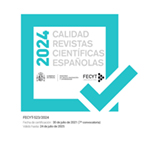El concepto de ilhuicatl en la cosmovisión nahua y sus representaciones gráficas en códices
Abstract
The purpose of this paper is to analyze the concept of ilhuicatl, «heaven», in the pre-Hispanic world view, by the means of semiotic methodology. After philological analysis the semantic field is determined. Consequently, the conclusion is drawn that the word ilhuicatl designates the day sky and the night sky, and the relationship between them is the same as between Omeyocan and Mictlan, meaning that the relation is formed on the opposition day / night, and not up / down. This similarity and opposition is confirmed by the graphic representations: the images of the night sky are practically the same as the images of the interior of the earth / the ultra world. It is observed that the difference between graphic representations of the day sky and the night sky consists of the use of the black colour and not of the signs of stars. Furthermore, it can be supposed that the pre-Hispanic convention of representation of the day sky was to show it as layers in different colours.Downloads
Article download
License
In order to support the global exchange of knowledge, the journal Revista Española de Antropología Americana is allowing unrestricted access to its content as from its publication in this electronic edition, and as such it is an open-access journal. The originals published in this journal are the property of the Complutense University of Madrid and any reproduction thereof in full or in part must cite the source. All content is distributed under a Creative Commons Attribution 4.0 use and distribution licence (CC BY 4.0). This circumstance must be expressly stated in these terms where necessary. You can view the summary and the complete legal text of the licence.









